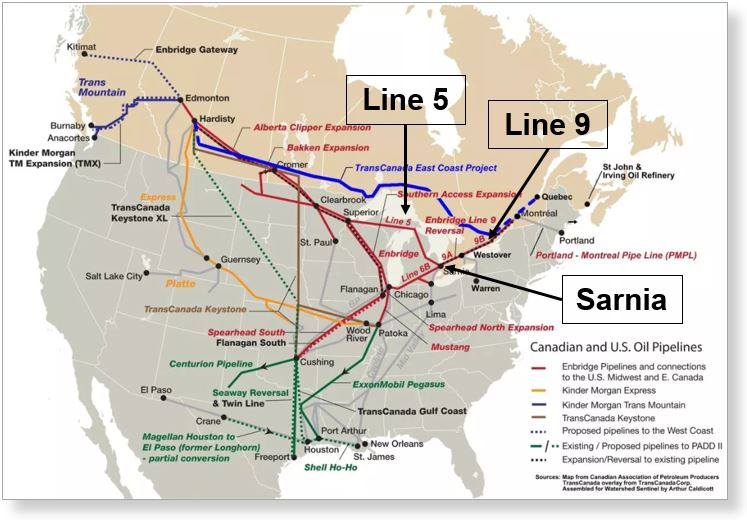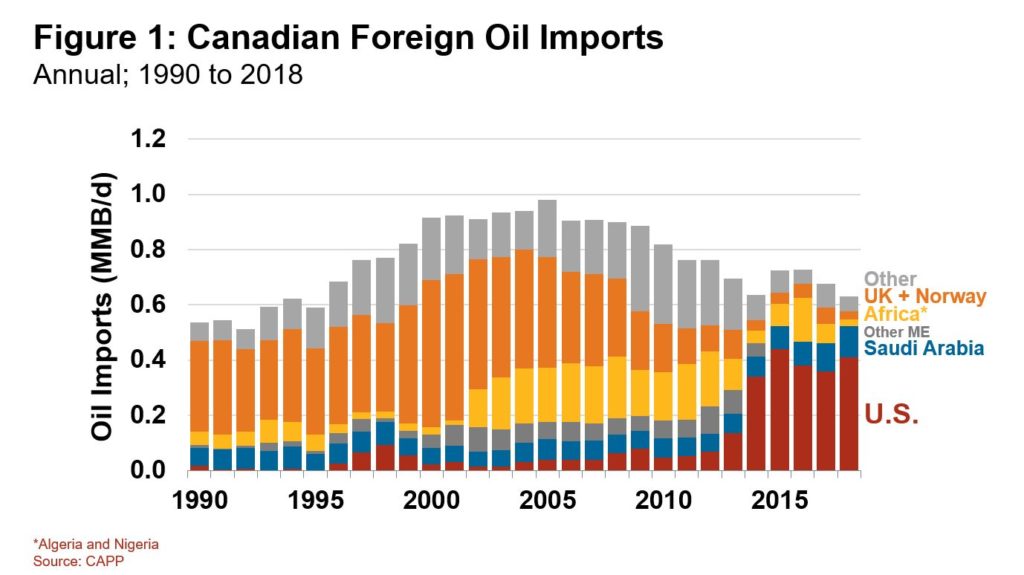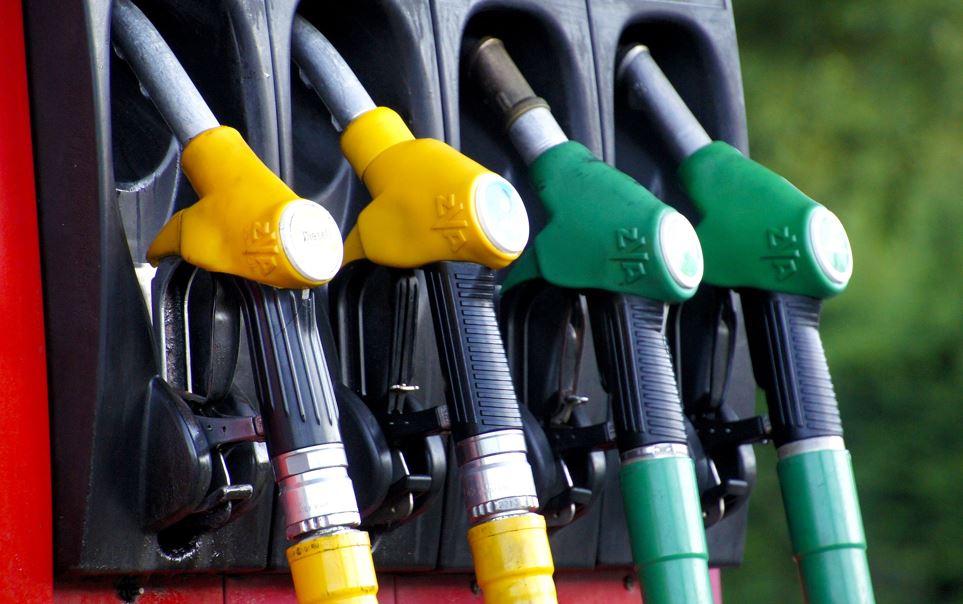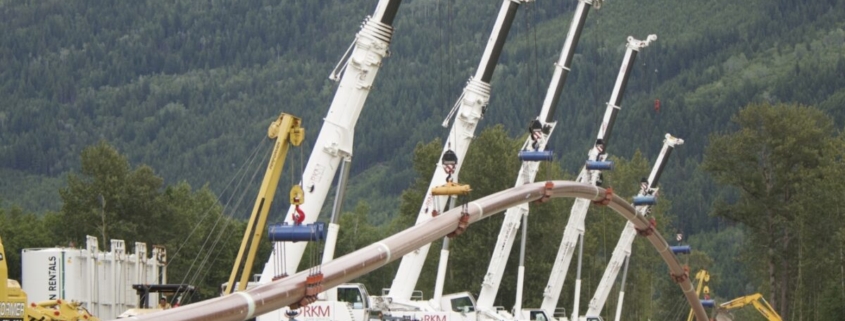Cheap, Clean, Safe and Secure?
Cheap, clean, safe and secure. Whether it’s petroleum products, natural gas or electricity, that’s how we like our energy.
But we’re never really satisfied, are we? Our wallets feel picked by the monthly utility bill. Only a perpetual motion machine will ever be clean enough. And we question safety over extremely low-probability events.
I’m being facetious, of course, but what about energy security? That’s the instinctual knowledge in modern society that the lights go on when you flick the switch. Security is the comfort that the furnace will fire up for an Edmonton winter and the gas pump will have ample fuel when you pull up to fill up.
When our energy systems fail to deliver that is when we panic.
Ironically, when it comes to oil supply, Canada could be one of the least energy secure countries in the world.
Say what? Canada, the fourth largest producer of oil in the world, a country that exports just over two times more petroleum than it consumes, is vulnerable to shortages?
In fact, recent events raise the probability of disruption in Central Canada.
First some background. Unless you’ve been off-grid, you should know that Canada does not have a pipeline that flows from its western oilfields to the eastern reaches of our land. The last hope of having a cross-country pipe was squashed in 2017 with the shelving of the contentious Energy East project.
Trying to connect east and west is not a new issue in Canada. Seventy years ago, Parliament debated the merits of an all-Canadian oil pipeline route versus the lower-cost option of routing our oil though the United States. Repeatedly, low-cost has trumped sovereignty in our pipeline decisions.
Central Canada continues to import most of its oil through pipelines from the United States. Much of it arrives through a blandly-named piece of steel called “Line 5.”

A pipeline from the United States sounds comforting enough; President Trump called our friendship “one of the most important,” on Canada Day. But the good vibes are not as friendly in Michigan, where it matters most. The Democratic governor, Gretchen Whitmer, has vowed to shut down Line 5; her Attorney General has launched a lawsuit to that end.
Operated by Enbridge, Line 5 has a capacity of 540,000 barrels of day of crude oil and natural gas liquids. It’s a vital source of supply for the Sarnia refinery complex that satiates Central Canada’s energy needs. Inconveniently, the decades-old pipeline runs under the Strait of Mackinac, a channel between Lakes Michigan and Huron. Like any pipeline these days, safety and environment are the points of high scrutiny.
Yet if Americans cut Line 5, they cut off Sarnia.
Another pipeline, Line 9, could theoretically come to the rescue. Built in 1976 as a security alternative, it connects the Sarnia complex to Montreal. Should Line 5 be cut, foreign oil tankers could bring oil from abroad to feed Sarnia from the Gulf of St. Lawrence. But that’s only notional.
Line 9 flows the wrong way now, from Sarnia to Montreal. It was reversed in 2015 for economic reasons, since North American oil became cheaper than offshore oil—another cost-over-security decision.
If there is any comfort in this emerging story it’s that the US Midwest refineries east of Lake Superior will also be negatively impacted should Line 5 be cut. So, there may be a Michigan-Ontario détente of mutually-assured economic destruction.
Yet, there is more. A few weeks ago, we were informed that Iran was a hair trigger away from being bombarded by a US military strike. Such action could have cut off the Straits of Hormuz, through which 20% of the world’s oil traverses. It’s not a stretch to believe Iran would have retaliated by lobbing missiles into oil infrastructure of its archrival, Saudi Arabia. The risks were high that this vital oil “choke point” that supplies much of the world could have choked.
Anyone who lived through the 1970s (like me) knows what happens when vital energy supplies are disrupted. Peoples’ behaviour changes (not for the better), governments call emergencies and everyone starts hoarding. Self-preservation is in our DNA.
Central Canada doesn’t get much oil from the Middle East any more, but it does get a lot from the United States (see Figure 1). How will they behave toward Canada during a potential global supply outage?

For those who remember, there was a live drill during the 1973 Arab Oil Embargo. Can you guess where Canada scrambled to import the scarce commodity? Answer: from Canada. Yes that’s right, it had to import from itself.
For several months, Greek tankers picked up Alberta oil that was delivered through the TMX pipeline to Burnaby, took the cargo around the Panama Canal, up the east coast of the United States to Montreal (see past commentary). While this long-way-round trick can supply oil to Quebec it won’t work for getting supply to Sarnia. As mentioned, Line 9 flows the wrong way.
The final irony is that Canada does not have a strategic petroleum reserve (SPR). After the 1970s oil shocks, western nations agreed to store oil in caverns and tanks, pledging to share and ration out the stored barrels to member countries in the event of global disruption.
But Canada, along with Norway decided to opt out of having an SPR. As a net exporter, we exercised an Article 2 exemption, arguing that we were secure in our own oil supplies. We haven’t tested that thesis since 1973.
Maybe we have been too busy fussing about cheap, clean and safe to realize that we may be a judge’s gavel in Michigan, or a cruise missile in Iran, away from oil shortages in the heart of our country.
Thankfully we had the foresight to build a railroad across the land. It passes through Sarnia.



